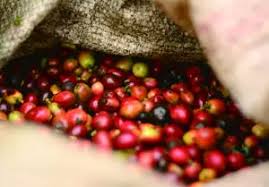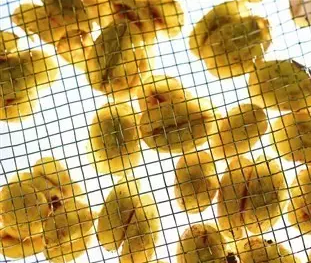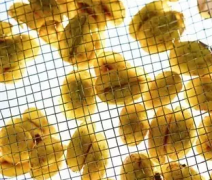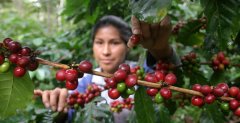Guatemala white honey coffee hand brewing parameters San Pero Chateau Camus Kaddura boutique coffee beans

Professional coffee knowledge exchange more coffee bean information please follow the coffee workshop (Wechat official account cafe_style)
Guatemala Coffee Industry Guatemala Coffee beans Guatemala Coffee recommendation
Brewing parameters of Guatemala White Honey Coffee
Make Guatemalan coffee by hand. 15g powder, medium fineness grinding (small Fuji ghost tooth cutter 3.5grinding), V60 filter cup, 89Mei90 degree water temperature, the first water injection 30g water, carry on 27 seconds of steaming, injection to 105g water cut off, wait for the powder bed water to half, then water injection, slow water injection until 225g water volume, tail section do not want, water powder ratio 1:15, extraction time 2:00
[key points of brewing]
The coffee powder per person is about 15 grams and the boiled water is 225 grams.
People who like light coffee can brew it with the amount of powder about 14 grams per person.
For those who like bitter taste, the amount of flour can be 16 grams per person, fully steamed and then slowly injected into boiling water.
The kettle used for hot water injection is easier to operate if it is injected for about seven or eight minutes, while the amount of boiling water is prepared according to the number of people. You can measure the beaker while dripping the required amount of coffee liquid.
Do not drop the filtered extract to the last drop, and stop in the residual state (if all the drops may have smells or impurities, etc.).
Heat the beaker without boiling it and pour it into the coffee cup.
This approach, like syphon, is technologically important. At first, the coffee may be very sour, in addition to the poor control of water output, the quality of the coffee itself (freshness … Etc) and particle size are also important factors.
[brewing method]
1. The next part of the filter paper is folded along the seam and placed in the drip.
two。 Pour the coffee powder into the drip with a measuring spoon and tap a few more times before the surface becomes flat.
3. After boiling the river water in a teapot, pour it into a small-nozzle kettle and gently inject boiled water from the central point (the water temperature is about 89 / 90 degrees). Slowly start to spiral the boiling water into the kettle and
Until it's covered with powdered coffee. Be sure to pour it in slowly.
4. Extract the delicious ingredients and steam the expanded coffee powder (stay for about 30 seconds).
5. The second time the boiling water is injected slowly from the surface of the coffee powder. The amount of water injected must be consistent with the amount of coffee liquid extracted, and the boiling water of the filter paper must be kept at a certain level.
6. The extraction liquid can be stopped as soon as it reaches the number of people, and the state of boiling water left in the filter paper will be discarded.
Coffee was really introduced into Guatemala in 1750 by Father Jesuit, where the coffee industry was developed by German colonists at the end of the 19th century. Today, most of the coffee industry's production takes place in the south of the country. Guatemala has seven main coffee producing areas: Antigua (Antigua), Cobain (Coban), Lake Attilan (Atitlan), Vevetnango (Huehuetenango), Farahan Plateau (Fraijanes), Oriente (Oliente) and San Marco (San Mareos).
Each region has its own climate change, so the coffee beans in each region have their own characteristics, but to sum up, Guatemalan coffee has a mild and mellow overall texture and elegant aroma. With similar hot and pleasant acidity such as fruit acid, Guatemala has become an aristocrat in coffee.
Volcanic soil, high altitude, humid and rainy climate, and active volcanic activity have created the unique geographical conditions of the Farahan Plateau. The Pacaya volcano in the region is the most active of the three still erupting volcanoes in Guatemala, leaving the Farahan Plateau often shrouded in a thin layer of dust and providing plenty of minerals for the soil of the Farahan Plateau.
The dry period of coffee beans is the sunny season on the Farahan Plateau. Although it is often cloudy and foggy in the early morning, it will dissipate quickly, ensuring sun conditions in the area.
Guatemala white honey Camus, retain 20% pectin fermented honey treatment
White honey treatment is a rare coffee treatment method, and its specific operation methods are as follows:
1: remove 90% Murray 100% pectin from coffee after picking.
(consistency, high cleanliness, balanced taste)
2: the drying time is about 2 weeks.
(coffee is relatively low in sweetness.)
3: the drying method is dried by sunlight or natural shade.
(sun-irradiated coffee beans have relatively high sweetness and natural shade-dried coffee beans have relatively high acidity.)
During the harvest season, many raw bean batches from Attilan San Pero will be cup tested based on quality and bean information. The most representative batches are selected and mixed with fresh coffee fruits picked by different local farmers. We think these are the best coffee beans available in the area.
The nutrient-rich pozzolanic soil, high altitude, 2000 mm average annual precipitation and relatively low average temperature all give the coffee a clean sweet taste and bright acidity. The soil of Attland is rich in organic matter, and 90% of the coffee trees are planted on the volcanic slopes around Lake Attilan. Every day, the breeze blows the cool water of the lake, which has an important impact on the microclimate change in this area.
Guatemala Finca Las Deliclas
Country: Guatemala
Grade: SHB
Producing area: Atitlan producing area
Altitude: 1600 m
Treatment method: White honey
Variety: Kaddura
Processing plant: Chateau San Pero
Flavor: fresh longan, pear, sucrose
Flavor description: longan, litchi, fresh longan, pear, sugar, medium mellow thickness, smooth taste, full of sweetness

Purchase link: https://item.taobao.com/item.htm?spm=a1z10.5-c.w4002-15673140460.21.5faa6972kWMTWV&id=556326263788
Important Notice :
前街咖啡 FrontStreet Coffee has moved to new addredd:
FrontStreet Coffee Address: 315,Donghua East Road,GuangZhou
Tel:020 38364473
- Prev

Introduction to the treatment of Kaddura Fine Coffee in Chateau San Pero, Guatemala
Professional coffee knowledge exchange more coffee bean information please follow the coffee workshop (Wechat official account cafe_style) Guatemala coffee industry Guatemala coffee beans Guatemala coffee recommendation Guatemala Finca Las Deliclas country: Guatemala level: SHB production area: Atitlan production area altitude: 1600 meters treatment: White honey variety: Kaddura treatment
- Next

Guatemala Cadura Coffee Guatemala hand-made Coffee beans San Pero Manor Camus White Honey
Professional coffee knowledge exchange more coffee bean information please follow the coffee workshop (Wechat official account cafe_style) Guatemala coffee industry Guatemala coffee beans Guatemala coffee recommendation Kaddura: it is a bourbon single gene variety found in Brazil in the 1950s, the yield capacity and disease resistance are better than bourbon, the tree is shorter, easy to harvest, but
Related
- Detailed explanation of Jadeite planting Land in Panamanian Jadeite Manor introduction to the grading system of Jadeite competitive bidding, Red bid, Green bid and Rose Summer
- Story of Coffee planting in Brenka region of Costa Rica Stonehenge Manor anaerobic heavy honey treatment of flavor mouth
- What's on the barrel of Blue Mountain Coffee beans?
- Can American coffee also pull flowers? How to use hot American style to pull out a good-looking pattern?
- Can you make a cold extract with coffee beans? What is the right proportion for cold-extracted coffee formula?
- Indonesian PWN Gold Mandrine Coffee Origin Features Flavor How to Chong? Mandolin coffee is American.
- A brief introduction to the flavor characteristics of Brazilian yellow bourbon coffee beans
- What is the effect of different water quality on the flavor of cold-extracted coffee? What kind of water is best for brewing coffee?
- Why do you think of Rose Summer whenever you mention Panamanian coffee?
- Introduction to the characteristics of authentic blue mountain coffee bean producing areas? What is the CIB Coffee Authority in Jamaica?

